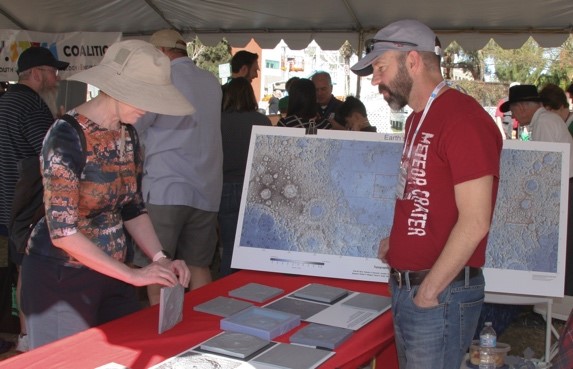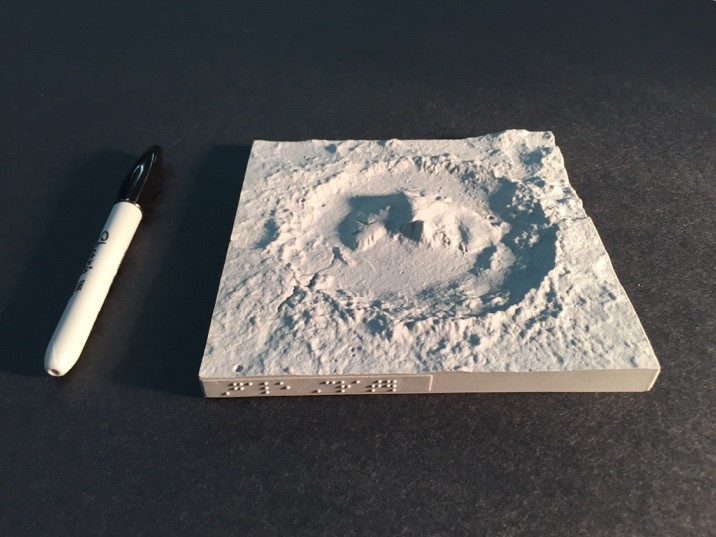3D Printing the Solar System
Dr. Steve Kortenkamp, LPL Associate Professor of Practice, is combining the capabilities of 3D printers with high-resolution spacecraft data (including those from LPL’s HiRISE instrument orbiting Mars) to produce tactile models of planetary terrain. The effort is part of an NSF-funded research project being carried out with his colleagues Drs. Sunggye Hong and Irene Topor in UA’s College of Education. Their group is designing and teaching a planetary science course for young students who are blind or visually impaired, with the aim of identifying ways to increase the representation of these students in STEM fields.
Kortenkamp is developing techniques that begin with software processing of spacecraft data; 3D printing of prototype models is added, culminating with a method of molding and casting duplicates of the models for each of his students. His work with the blind and visually impaired was featured at a Science City booth during the Tucson Festival of Books in March.
During the first year, Dr. Kortenkamp’s students are focusing on impact craters as a tool for studying planetary characteristics. They begin their studies locally by exploring 3D models of Arizona’s Meteor Crater. Then they reach out to the Moon by studying Tycho, Orientale Basin, and the near-side/far-side surface dichotomy. The class culminates on Mars with terrain that reveals evidence of water, such as craters in Athabasca Valles as well as Gusev and Gale craters. In subsequent years, Kortenkamp’s class will include 3D models of volcanoes, canyons, dune fields, asteroids, and cometary nuclei.

Dr. Kortenkamp (right) with his 3D models at Science City. The visitor is using her fingers to read the Braille label on a model of the Moon’s Tycho Crater.

Cast of a 3D-printed model of Gale Crater on Mars. Gale’s central mountain complex is currently being explored by NASA’s Curiosity rover. (Model includes Braille label. Standard Sharpie marker shown for scale.)

